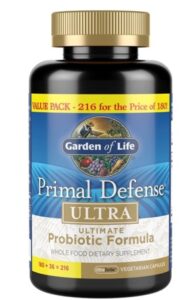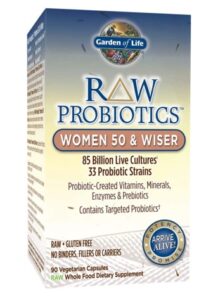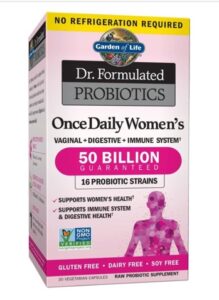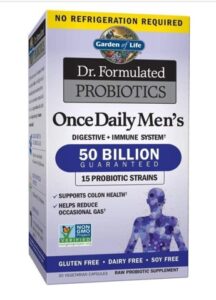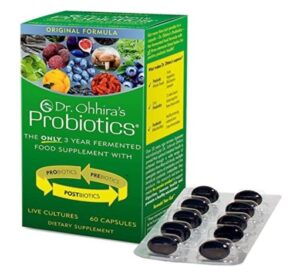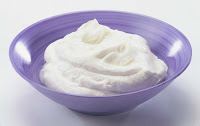 The bacterial cultures that are traditionally used to make yogurt are called probiotics, meaning “for life.” Although they may have funny sounding names–Lactobacillus bulgarius, Lactobacillus acidophilus, Bifidobacterium lactis, and Streptcoccus thermophilus–it is these “good bacteria” that are also responsible for many of yogurt’s health benefits.
The bacterial cultures that are traditionally used to make yogurt are called probiotics, meaning “for life.” Although they may have funny sounding names–Lactobacillus bulgarius, Lactobacillus acidophilus, Bifidobacterium lactis, and Streptcoccus thermophilus–it is these “good bacteria” that are also responsible for many of yogurt’s health benefits.
Probiotics are necessary for the body to function at its best. The following are some of the health benefits of “live and active” cultures:
Improved Intestinal Health – Yogurt containing “live and active” cultures helps maintain the balance of good bacteria vs. bad bacteria in the intestine. Yogurt can aid in the treatment and prevention of antibiotic-associated diarrhea, traveler’s diarrhea, and diarrhea in children. Lactobacillus acidophilus has been shown to protect against stomach ulcers by suppressing the growth of ulcer-causing bacterium.
Lowering Cholesterol – In a study of older adults, intake of about 1 cup of yogurt with live cultures per day for one year prevented an increase in total and low-density lipoprotein (LDL – the bad cholesterol) levels.
Cancer Prevention and Immune-Enhancing Effects – Several studies show that the consumption of high levels yogurt may reduce the risk of colon cancer. Probiotics also enhance the immune system by increasing white blood cell count and prevent the formation of tumors.
Selecting the Best Yogurt
When buying yogurt, the more natural the product is, the more beneficial it will be to your health. Plain Organic yogurt is best, as it will have the lowest amount of naturally occurring sugars (from lactose) and the highest amount of live and active cultures.
Yogurt-lovers should take notice: there are products in the marketplace that can take advantage of yogurt’s healthful image. Beware of yogurts containing artificial colors, flavorings, or sweeteners such as aspartame or sucralose (Splenda), modified food starch, gelatins, and added sugars such as high fructose corn syrup.
Vanilla or other flavored yogurts and yogurts with fruit pre-mixed in are usually inferior yogurts in terms of nutritional value and levels of live and active cultures.
Some yogurt manufacturers pasteurize their milk before the culturing process, while others pasteurize after the yogurt is made. Although the aim of pasteurization is to kill any harmful bacteria, any pasteurizing done after the culturing process can kill the active live cultures and keep you from reaping their benefits.
To dispel consumer confusion about yogurts, the National Yogurt Association (NYA) developed the Live and Active Cultures seal to help consumers readily identify those yogurts containing significant levels of live and active cultures.
 Look for this seal on your yogurt container
Look for this seal on your yogurt container
In order to meet the NYA criteria, live and active culture yogurt must satisfy these requirements:
- The product must be fermented with both L. bulgaricus and S. thermophilus.
- For refrigerated yogurt, the total viable count must be at least 100 million (108) CFU (colony forming units) per gram at the time of manufacture. In the case of frozen yogurt, the total viable count at the time of manufacture must be 10 million (107) CFU per gram.
- The cultures must still be active at the end of the stated shelf life.
Since the seal program is voluntary, some yogurt products may contain live cultures but not carry the Live & Active Cultures seal. Consumers should check the label for indications that the yogurt contains live cultures. But without the seal, there is no unbiased validation of the level of live cultures present in the product.
Eat Yogurt Every Day
Yogurt can be incorporated into your diet in a variety of ways. By adding cut up fruit, berries, granola, wheat germ, oat bran, nuts, or freshly ground flaxseeds to your yogurt, you can turn it into a delicious replacement for your usual dessert. You can also substitute yogurt for milk in many recipes for foods like pancakes, waffles, and even pumpkin pie. Here’s my favorite recipe for turning plain organic yogurt into a yummy sugar-free treat!
Easy Vanilla Yogurt
If plain yogurt is too sour for your palate, try this lightly sweet variety. Using plain organic yogurt ensures that it will not contain added sweeteners or chemical additives.
Makes 1 serving
1-cup plain fat-free organic yogurt
1 tsp. pure vanilla extract*
3 drops liquid Stevia or to taste
Place all ingredients in a bowl and stir until vanilla extract has been thoroughly mixed in and you no longer see its color. Enjoy immediately!
All vanilla extracts are not created equal. Beware of vanilla extracts that contain sugar or corn syrup.

